Ocean Week in Review – April 2, 2021: Maldives to legalize shark fishing, Loss of sharks accelerating climate change, Biden announces offshore wind plan and more…
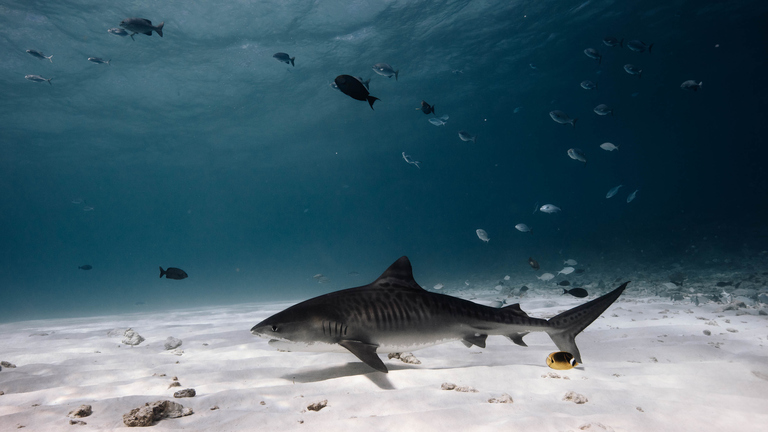
1. Maldives to Legalize Shark Fishing
Maldives Minister of Fisheries Zaha Waheed stated discussions about legalizing shark fishing are underway in the country. She spoke during the Parliamentary Committee on Economic Affairs, stating the reasons behind shark fishing legalization are that fisheries have long been a source of revenue for the island state and very few countries implement shark conservation. It is believed profit from shark fishing without endangering shark populations can co-exist for a duration with proper fishery management. Shark fishing in the Maldives began in 1970 and was banned in 2010. The ban also included the sale and exportation of all shark related products. Fishermen of the Maldives say they have faced hardships since the ban. Sharks have also remained a topic of discussion in communities due to concerns of over population and recent shark attacks.
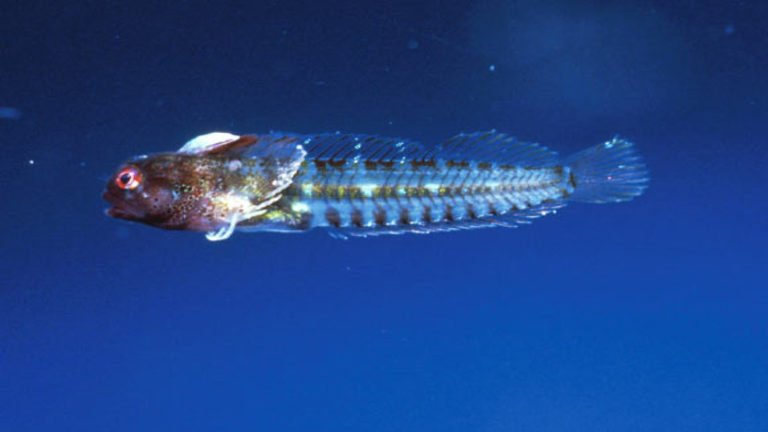
2. New Species: Reef-Dwelling Fish Discovery
A marine biologist from Scipps Institution of Oceanography has discovered a new reef-dwelling fish in the waters of Cocos Island (Isla del Coco). The new species of chaenopsid blenny, known as blennies, belongs to a group of over 900 fish. Blennies are typically difficult to spot because they live on the ocean’s floor, in crevices of reefs, and are small in size. The new blenny has been named Coralliozetus clasus, with a nickname of Pandemic blenny. This is the second native blenny of Cocos Island, the first being Cocos barnacle blenny (Acanthemblemaria atrata). This also marks the twelfth native cryptobenthic fish species, which are small reef-dwelling fish that are important in keeping the reef healthy. Marine waters surrounding Coco Islands are well protected, which is excellent news for the conservation of these little fish that aren’t found anywhere else in the world.
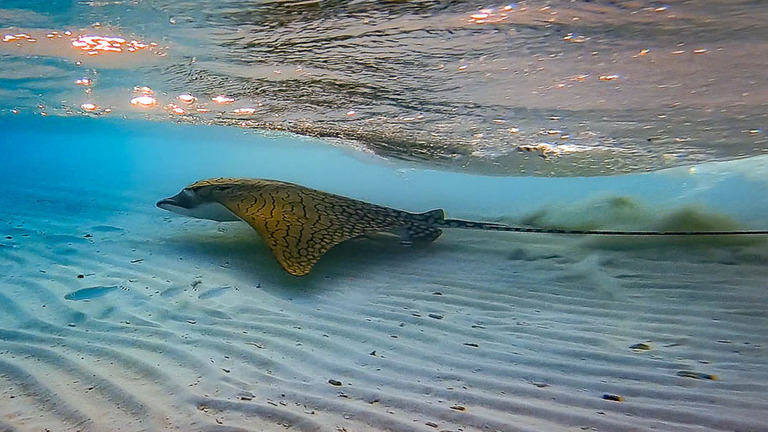
3. ICUN Adds 39 Sharks and Rays to Endangered Red List
The International Union for Conservation of Nature (ICUN) has classified an additional 39 species of sharks and rays as at risk of extinction. A total of 355 species are now on the list: 76 are listed as critically endangered, 112 as endangered, and 167 as vulnerable to extinction. This is 36% of all shark and ray species and is an 11% increase from 2014. Dr Andy Cornish with WWF’s global shark and ray conservation program says that this could not be a louder bell for the need of conservation and cites overfishing as their greatest threat. This is especially true of rays as 8 out of 9 species have been moved from endangered to critically endangered, one of which, the Java stingaree (Urolophus javanicus) is believed to be extinct. Dr Cornish is urging governments and fisheries to act now before it is too late.
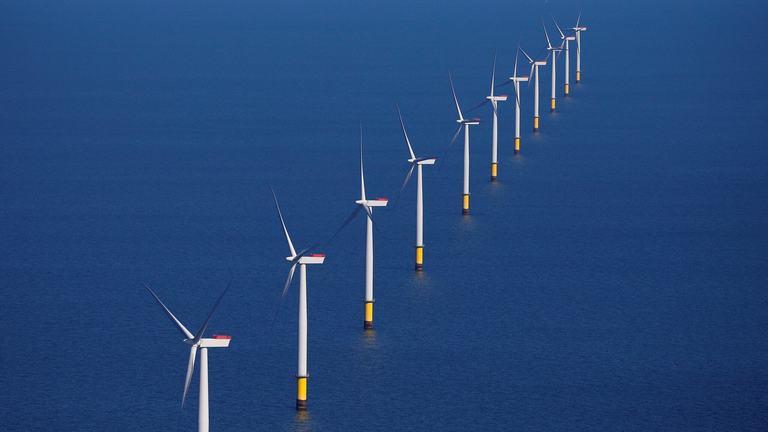
4. Biden Announces Offshore Wind Plan
This Monday the Biden administration announced their plan to expand offshore wind power along the East Coast. The administration’s goal is to deploy 30,000 megawatts of wind turbines by 2030, enough to power 10 million homes. This includes a $3 billion budget in federal loan guarantees. The project is estimated to produce 44,000 new direct jobs, and 33,000 new indirect jobs. There are expected to be 13 offshore projects completed, with a priority area of shallow water between Long Island, New York and New Jersey. The White House said the plan will avoid 78 million metric tons of carbon dioxide emissions. Many states, including Connecticut, Maryland, Massachusetts, New Jersey, New York, and Virginia have also committed to buying more than 25,000 megawatts of offshore wind power by 2035.
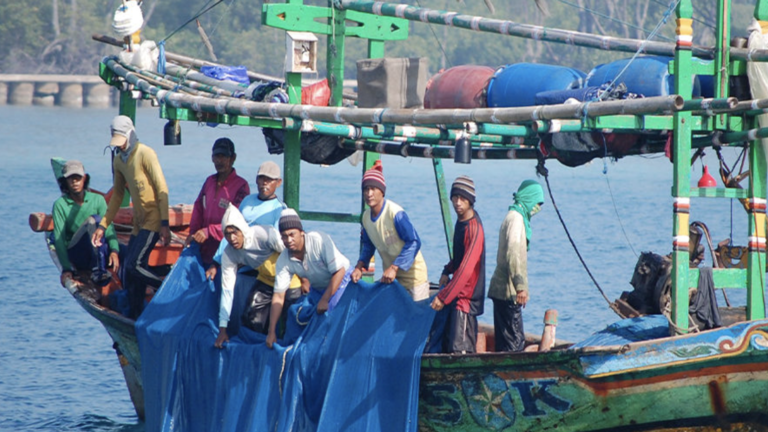
5. $500m Fishing Hotspot in Indonesia Needs Protection
A call for a new marine protected area (MPA) in Indonesia has been made in a $500 million dollar fishing “hotspot” for juvenile snappers and groupers. Snapper and grouper fisheries of Indonesia are referred to as the “deep-slope demersal fishery” and include over 100 species. Stocks are at risk from overfishing and the high demand of juvenile fish because they fit easier on a plate than an adult. The proposed MPA is in the Java Sea-Makassar Strait region, where a study found fishery catches were 75% juvenile fish. Healthy stocks of young fish is necessary for species long term survival as it removes not only them, but their future offspring. Experts also say a change in consumer habits is an important factor as it is what drives the fishing of juveniles.
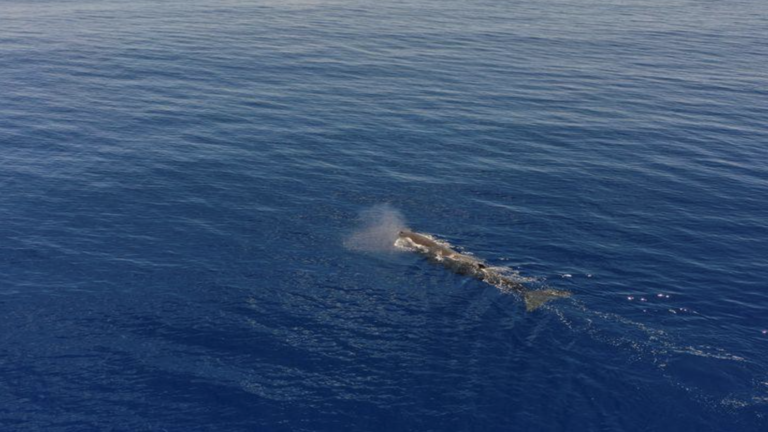
6. Sperm Whale Sighting in Indian Ocean Oasis
The Greenpeace research expedition is on a month-long mission to discover the wonders of the Indian Ocean’s unexplored Mascarene Plateau. The goal is to draw the UN’s attention for ocean conservation. The plateau is larger than the Great Barrier Reef and is home to the world’s largest seagrass meadow. Its protection would help safeguard East African fisheries as far as 1,242 miles (2000km) away, making it a bit like a “savings account”. By week two the crew had seen spinner dolphins, orcas, whales and more, but no sign of the endangered sperm whale. Shortly after, unmistakable clicks and squeaks were picked up on their underwater microphone; a large pod was feeding nearby. In the days after, a burst of spray was spotted, followed by the sperm whale’s distinctive V-notched tail. The sighting confirms abundant marine life and gives reasons for urgent protection.
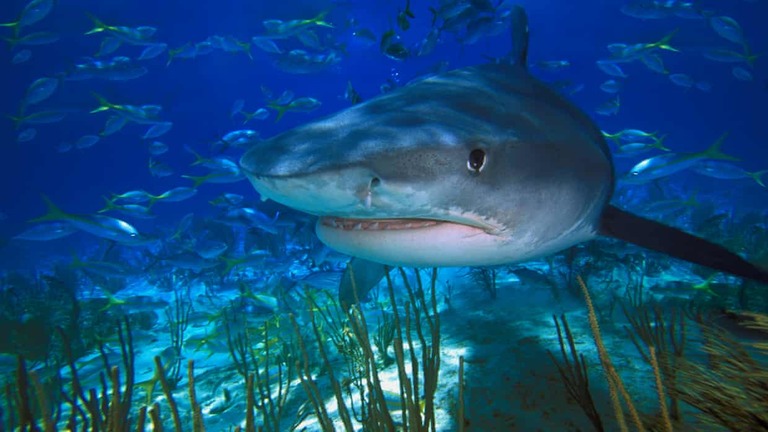
7. Why the Loss of Sharks Is Accelerating Climate Change
Sharks are critical in helping ecosystems recover from extreme climatic events, according to a new study. The conclusions came after scientists were able to determine the importance of the apex predator to a unique ecosystem following an extreme marine heatwave in 2011, which wiped out a quarter of one of the world’s largest and most biodiverse seagrass meadows in Shark Bay, Western Australia. Sharks are imperative to maintain these habitats because by preying on seacows, which eat seagrass, tiger sharks are effectively maintaining the undersea habitat in Shark Bay. Too many grazing seacows and an increase in temperature makes it harder for seagrass to regenerate, which disrupts biodiversity. “When everything is hunky dory, we might not realize how important predators are. But when things go wrong – like a climatic event – that’s when you can see the importance of predators” says Dr. Mike Heithaus, who co-authored the study.
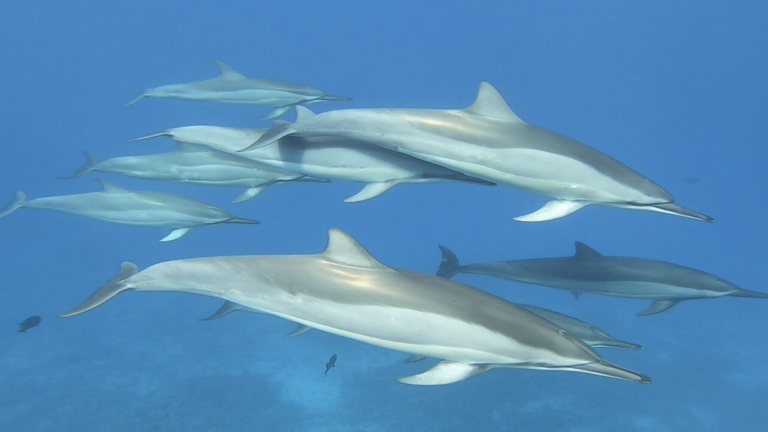
8. 25% Marine Mammals On Brink Of Extinction From Climate Change And Pollution
A new study has shed light on how several species of marine mammals in the world are on the verge of extinction due to climate change, pollution and other human activities. The study was conducted by a team from the University of Exeter which looked at 126 marine mammal species. They discovered that at least 25% of these species have been categorized as threatened. The study also states that 98% of marine mammal species are at risk on some level across 56% of the ocean, mostly in coastal waters. One of the main reasons for this is human fishing activities with several species of cetaceans like vaquita and pinnipeds have been almost pushed to extinction because of fisheries bycatch. While we’ve seen how plastic or chemical waste in water affects marine life, the study also emphasizes how noise pollution can be equally harmful.
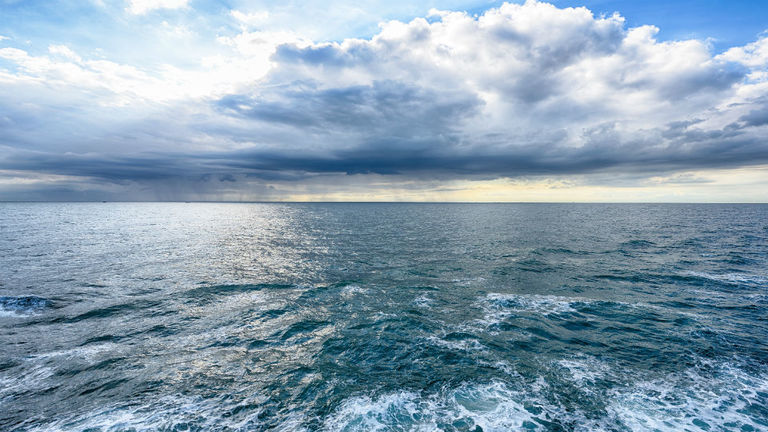
9. UK Gets Serious About Ocean Conservation
The UK is getting serious about protecting their oceans for both sustainability of long-term fisheries and preserving wildlife and their habitat. Since the UK’s departure from the European Union, the Government has created an ambitious plan for its “Blue Belt” of 40 marine protected areas (MPAs). This includes formal consultations of each over the next three years in priority order. All assessments will be done in collaboration with the fishing industry and other stakeholders. Furthermore, new marine management measures will be based on scientific evidence. The first four MPAs consulted were Dogger Bank Special Area of Conservation, Inner Dowsing, Race Bank and North Ridge Special Area of Conservation, South Dorset Marine Conservation Zone, and the Canyons Marine Conservation Zone. Any new measures put in place will take effect this year.
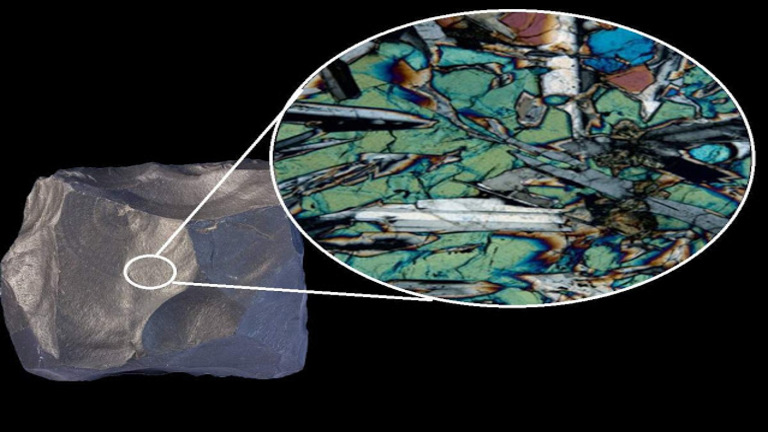
10. New Rock Discovered Beneath Pacific Ocean
An international team of researchers discovered a new type of basalt rock 1000km southwest of Japan’s Mount Fuji volcano. Basalt rock is created during large and extremely hot volcano eruptions. Discovery occurred at 6km deep and 1.5km into the ocean floor, making it one of the deepest waters ever to be considered for drilling. The rock was found in the birthplace of the 50 million-year-old “Ring of Fire”, a 40,000km horseshoe-shaped belt around the Pacific known for regular volcanic activity and earthquakes. This discovery tells us that Earth’s mantle was much hotter than we previously thought. Scientists have said the basalt rock is drastically different from that found on the earth’s surface, and both very different from that found on the moon. It is believed that the eruptions that caused the rock formation was between 1-2 million years ago.
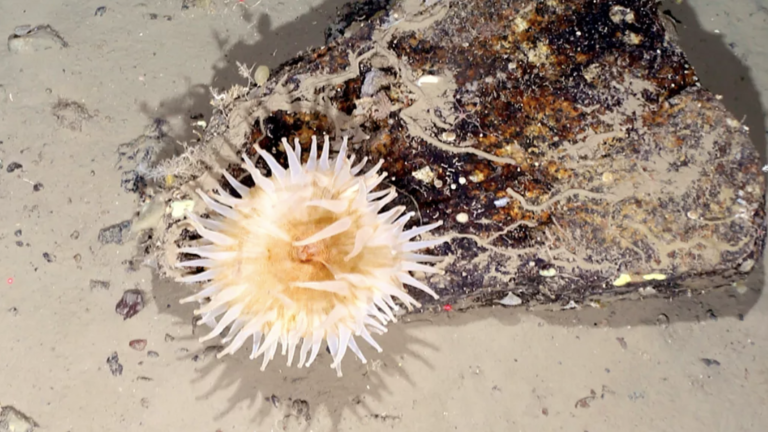
11. Antarctic Sea Creatures Live Trapped for 50 Years
Several weeks ago an iceberg twice the size of New York City broke off the Antarctic Ice Sheet and cruised through the Weddell Sea. It has been given the name of A-74. The breaking off of this gigantic iceberg has given scientists the opportunity to explore life beneath the ice surface. The German research Vessel Polarstern took hours of footage and thousands of photos of creatures living as deep as 18 miles. Surprisingly, this area that was covered in ice for over 50 years had an incredible amount of biodiversity. Even more surprisingly a colony of sea sponges and other stationary filter feeders were found. Stationary feeders usually wait for food to come to them in the form of phytoplankton, which is a microscopic marine algae that requires sunlight. Somehow, these nutrients were dragged thousands of feet below the ice shelves.
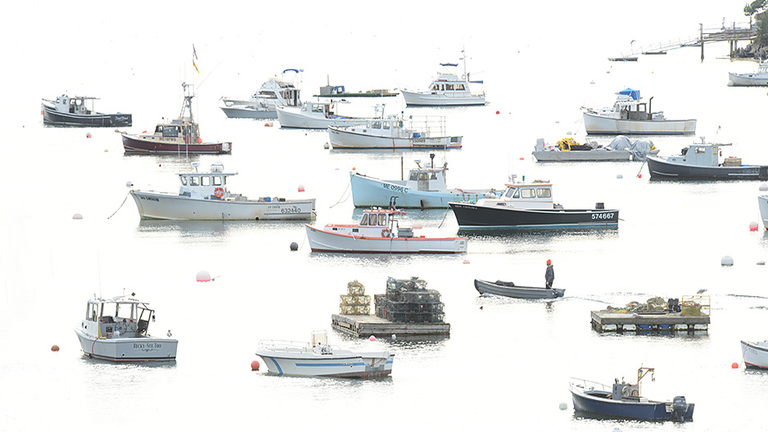
12. Fishing Industry Unhappy with NOAA Climate Plan
NOAA Fisheries held an unexpected conference with members of the fishing industry to discuss climate change. NOAA’s goal was to collect information from a diverse range of groups in hopes of increasing the resilience of fisheries. This conference was part of President Biden’s plan to address climate change by protecting 30% of U.S. oceans by 2030. Many fishermen spoke up and said they do not believe in climate change, claiming the industry has been adapting for many years to ocean changes, including Jeff Kaelin, director of sustainability and government relations at Lund’s Fisheries in New Jersey. Others in the industry said they feared closure of waters would actually increase emissions because fisheries will have to search for fish stocks for longer periods of time. NOAA Fisheries will continue to accept comments through April 2nd on the issue, with two additional conference calls next week.
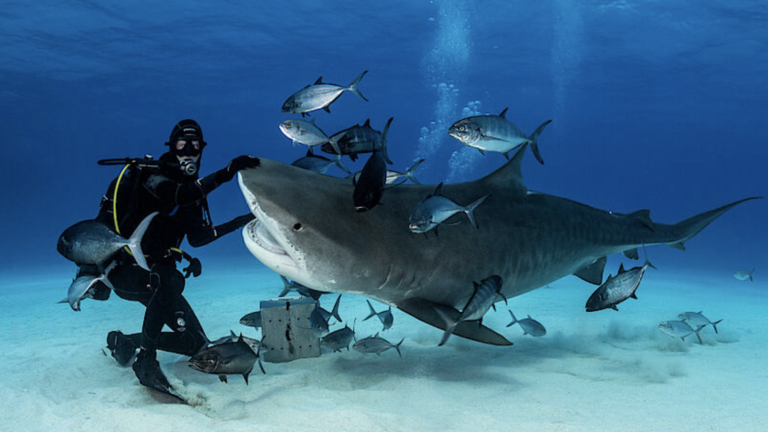
13. Older Than Expected: Teeth Reveal the Origin of the Tiger Shark
The tiger shark is one of the largest predatory sharks known today. An international team of researchers examined the fossil record of these apex predators and found out that modern tiger sharks are older than previously thought and that several tiger shark species existed in the past compared to the single species living today. It was assumed that the modern tiger shark originated ca. 5.3 million years ago. The team, however, was able to identify several 13.8 million-year-old fossil teeth as belonging to this shark demonstrating that it originated much earlier than previously assumed. With the help of geometric morphometrics, scientists were able to show that only 5 of the 22 known fossil tiger sharks actually represent valid species. Nevertheless, tiger sharks were more diverse in the past and only a single species survived until today.
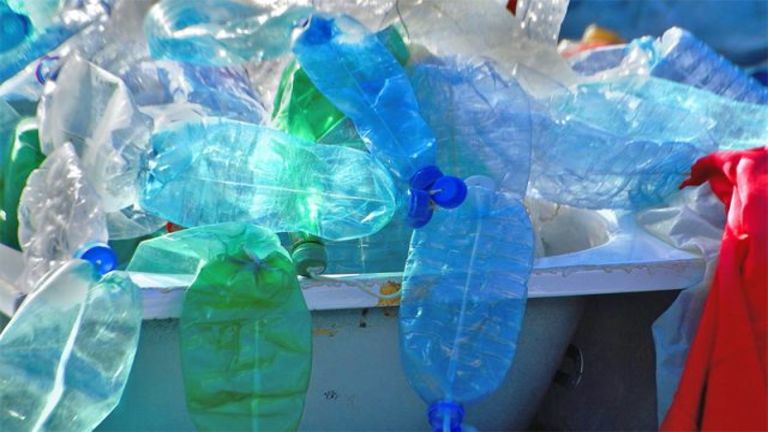
14. Virginia Bans Single-Use Plastics at State Agencies and Higher Ed
Virginia Governor Ralph Northam has a mission to reduce statewide solid waste. He announced Executive Order 77 this past Tuesday, which bans the use of single-use plastics at all state agencies and public colleges and universities. Gov. Northam stated, “Plastics, everything from plastic forks and spoons to straws to bottled water, are the most pervasive type of marine debris in our ocean and along our coast. We know the planet will be better off if we stop using so much plastic”. The order also hopes to ease the growing threat to fish and wildlife in the Chesapeake Bay. Plastics used for medical, public health, and public safety are not included in the ban. Agencies and higher education institutions have 120 days to comply with the order. They will have six months to develop individual plastic pollution reduction plans.
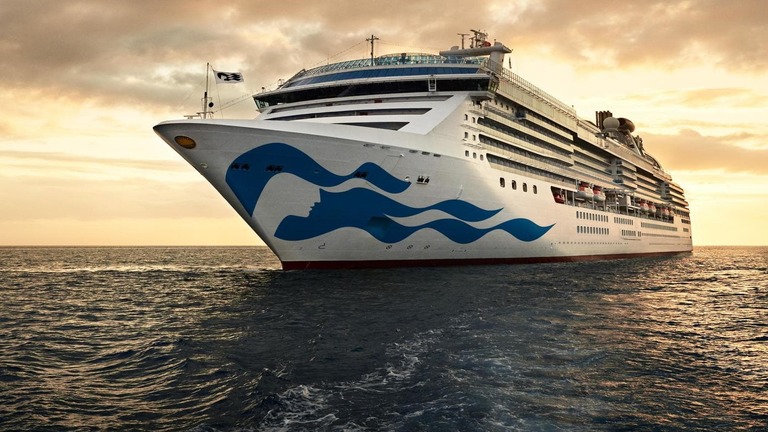
15. Environmental Groups Appeal to Florida Governor to Keep Cruise Regulations in Place
Two dozen environmental groups are authoring a letter to Gov. Ron DeSantis asking him to halt the push to preempt local governments from regulating major aspects of the cruise ship industry in Florida’s Key West. “Key West is the only cruise port in the world with a relatively shallow and narrow main channel in such close proximity to coral reef ecosystem habitats,” the letter to DeSantis reads. The ship channel runs directly through the Florida Keys National Marine Sanctuary and in the immediate vicinity of some of the most sensitive ecological preserves in the hemisphere. Some oppose the opinions of the letter, stating that Florida’s seaports are crucial to maintain maritime commerce and the state’s economy. However, the letter emphasizes the protection of Florida’s coral reefs as a main driver for the state’s tourism and attraction.
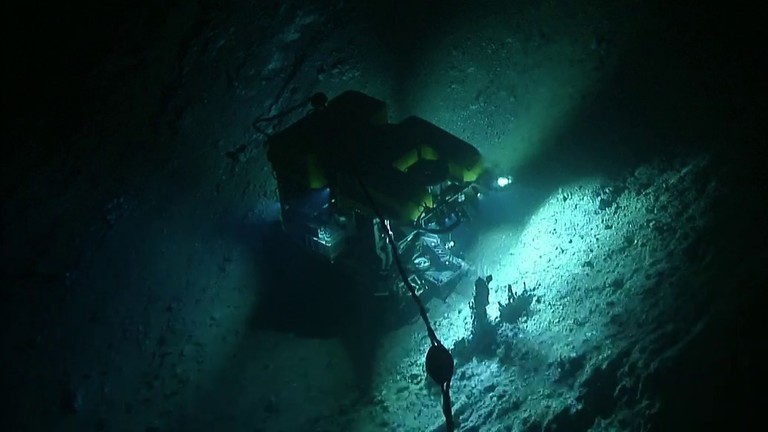
16. Deep-Sea Exploration Breakthrough to Guide Future Space Exploration
Scientists from Arizona State University, who are a part of the Systematic Underwater Biogeochemical Science and Exploration Analog (SUBSEA) program, have pioneered a new approach to the scientific process of geochemical exploration for our Earth and beyond. Scientists worked with teams onboard the Ocean Exploration Trust’s (OET) Exploration Vessel Nautilus to use deep-sea exploration on Earth to base hydrothermal systems on other ocean worlds. The new approach involves the use of programming languages to automate the multiple runs and data processing of geochemical calculations in order to analyze a large range of possible reaction conditions before and during their deep-sea investigations. In the search for life on other planets, scientists are looking to gain an understanding of what kind of water-rock interactions occur on icy moons and whether they support microbial life.
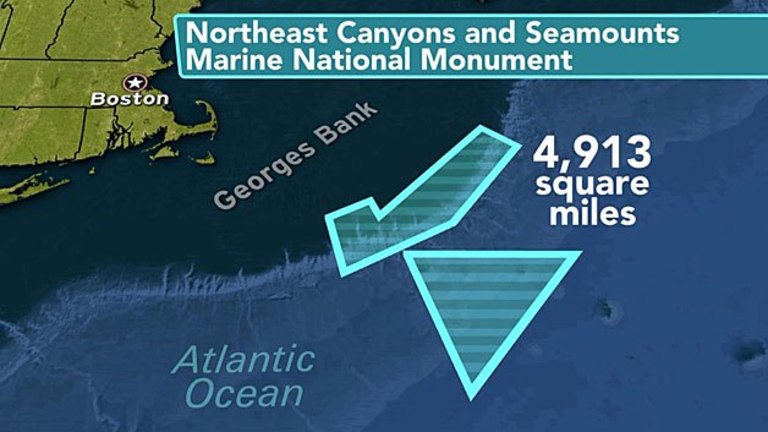
17. Supreme Court Won’t Hear Fishermen Case Against Ocean Monument
The Supreme Court on Monday rejected an appeal from a fishing group that challenged the creation of a large federally protected area in the Atlantic Ocean. The group sued to try to get rid of the Northeast Canyons and Seamounts Marine National Monument, which became the first national ocean monument in the Atlantic when President Barack Obama created it in 2016. The area consists of 5,000 square miles off New England, and it is home to fragile deep-sea corals. The fishermen sued in federal court saying the establishment of a protected zone where they have historically fished for lobsters and crabs could hurt their livelihoods. Federal district and appellate courts ruled that the monument was created appropriately by Obama, who used the Antiquities Act to establish it.
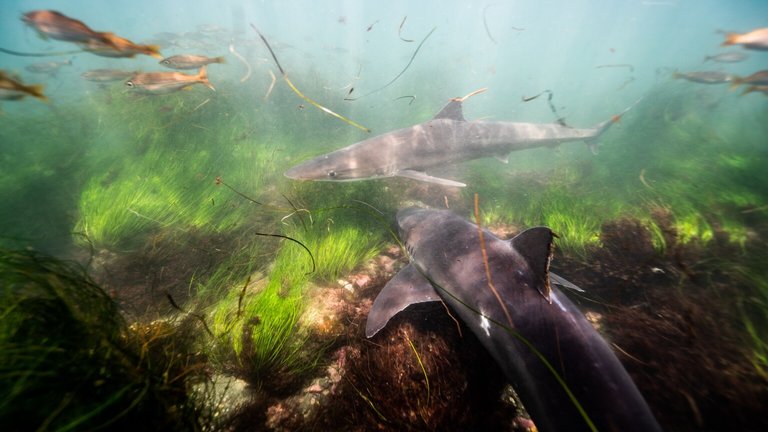
18. Soupfin Sharks Return to the California Coast Every 3 Years, New Study Reveals Why
Local researchers reveal interesting findings of soupfin sharks and why they come to the coast of San Diego. La Jolla Shores is known as a nursery for many animals. At any given time there are tons of sharks and rays and most of them are pregnant. That’s because La Jolla’s coastline is considered warm and calm compared to other parts of the West Coast. In a 7-year long study, shark scientists have found that every three years the same soupfin sharks, some caring 40 to 50 pups, are coming back. Believe it or not, one female soupfin shark could be carrying 40 to 50 pups. But what’s also remarkable is some of those pups likely have different “dads.” One female shark may have several male partners. In other parts of the world, soupfin sharks are food and have become victims of overfishing.
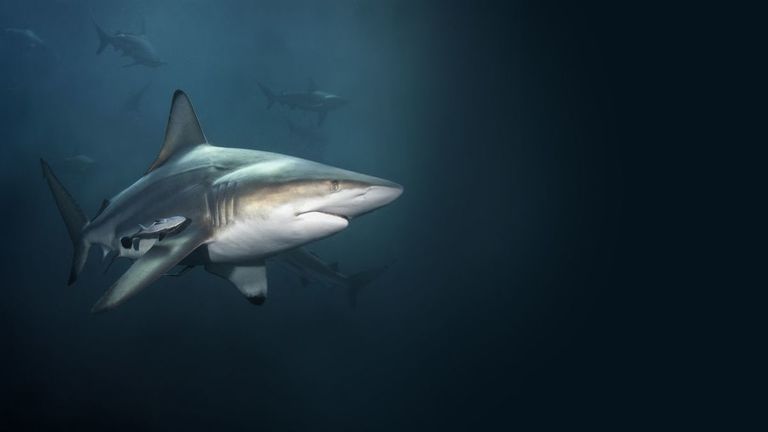
19. Spring Breakers Bitten by Sharks
Two tourists visiting South Florida for spring break have been bitten and blacktip sharks are the main suspect. Blacktip sharks are about 5 feet long and 270 pounds. The incidents took place several days apart; one at Juno Beach Pier and the other in Miami’s South Beach. Both individuals survived and are expected to make full recoveries. Blacktips do not seek human interaction and are typically very skittish. It has been reported the bites may have been the result of a confused shark that wandered into murky waters and was startled. Tourists should be weary this time of year as it is one of the world’s largest shark migrations, and it is only 650 feet offshore in the popular Broward and Palm Beach counties. At the height of migration, there can be as many as 1,200 sharks per square mile.
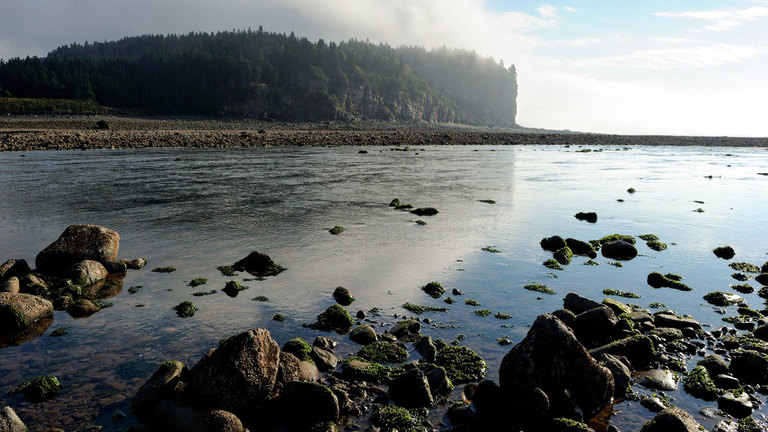
20. Returning Fundy’s Fish to the Wild
The inner Bay of Fundy (iBoF) Atlantic salmon is one of the 16 genetically distinct populations of Atlantic salmon in Canada. Fifty years ago, 40,000 iBoF salmon returned to 32 rivers that empty into the Bay of Fundy between New Brunswick and Nova Scotia. By the late 1990s, that number had dropped to 200. A few years later, there was a season when no fish came back at all. The population would have been lost forever if researchers at Fundy National Park in New Brunswick hadn’t started preserving a live gene bank of wild salmon. Since then, many have been carrying our recovery efforts at multiple locations in Fundy National Park, such as breeding these salmon and releasing the offspring in isolated watersheds to help support their lives in the wild later, until they are re-collected as adults to start the breeding cycle again.

21. What’s Good for the Ocean May Also Be Good for Business
Marty Odlin is trying to reverse the ocean’s decline of marine life through his company, Running Tide, with plans of growing kelp, seeding oyster reefs and clam beds along the shoreline, and creating an aquaculture operation that is selling oysters and eventually clams. Mr. Odlin’s plans are one of a number of efforts in the “blue economy,” a term used to describe commercial activity on the oceans, seas, and coasts. He and others are trying to prove that ocean conservation, sustainable fishing, and carbon sequestration can be good for business, especially as global shipping, aquaculture, and the appetite for wild seafood increase around the world. “Any of these projects require a more hands-on approach to saving the ocean and a more deliberate overlap of business and conservation, which have historically been at odds”, said Mr. Odlin.

22. The Marine Conservation Society Set To Host A Series Of Events For Ocean Action Week
Stirling Universities Marine Conservation Society is hosting a series of exciting online events for Ocean Action week. The Marine Conservation Society has said on this week’s events, “Ocean Action Week is a celebration of our seas and the life within them, as much as it’s also an effort to raise awareness of the issues impacting our oceans and to engage people in marine conservation efforts and help direct them to actions they can take to help. From presentations with guest speakers from a number of conservation organizations – discussing the issues affecting the Scottish marine environment in particular – to documentary screenings, beeswax wrap workshops, fundraising challenges and a quiz and raffle, Earth Hour, a Dumyat litter pick: the week is fully packed with something on for everyone, every day.
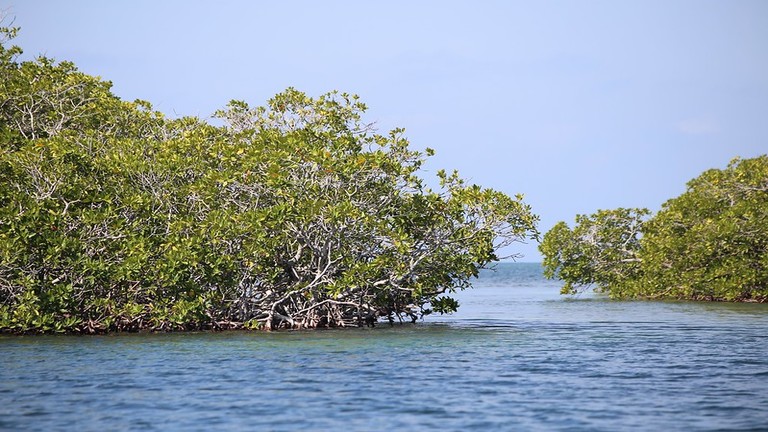
23. Resilience and Conservation in a Changing Climate: The Case of Belize
Belize is among the most vulnerable and disaster-prone countries in the world. For residents of its long coastline, which hosts the second largest barrier reef in the world, the impacts of climate change are evident. Sea temperatures are rising every year, resulting in coral bleaching and reduced fish catch. Recognizing the urgency of this issue, the Government of Belize, supported by the World Bank, implemented the five-year Marine Conservation and Climate Adaptation Project (MCCAP), financed by the Adaptation Fund. The project had the overarching goal of strengthening climate resilience of the Belize barrier reef. It took a multifaceted approach: helping to build sustainable and alternative livelihoods for coastal communities to relieve human pressures on the reef and to help them adapt to a changing climate; increasing protections and restoration efforts to conserve coastal resources; and building public awareness about climate change and the importance of marine resources.
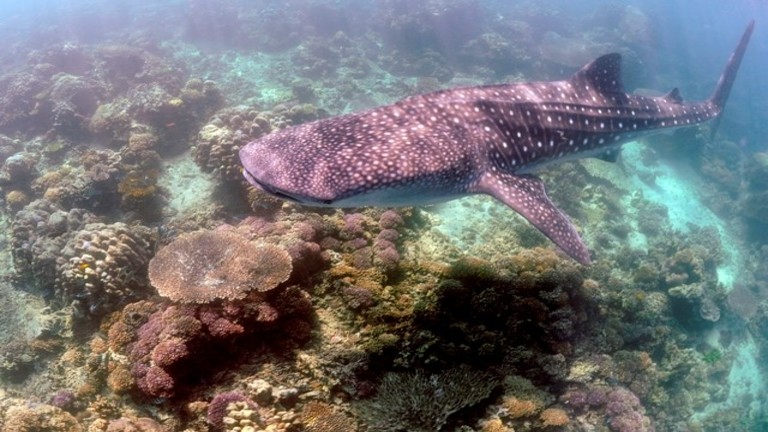
24. Unraveling the Mysterious Whereabouts of Djibouti’s Whale Sharks
Whale sharks from the Djibouti aggregation site were tagged to record their location over a few months. Tagged whale sharks entered the waters of at least five nations, including Djibouti, Yemen, Eritrea, Somalia, and Somaliland. Collectively, the whale shark movements that were recorded suggest that these animals are at high risk of exposure to human-driven threats in the Gulf of Aden and surrounding regions. Whale sharks face risks of targeted and/or incidental capture, entanglement, and boat strike, and because they move through the waters of different nations, they will receive varying levels of protection as they travel. The area around Arta in Djibouti is now designated as a Marine Protected Area to safeguard the primary feeding area for whale sharks, but management efforts in the other areas of recorded whale shark movements are needed in order to fully protect them.
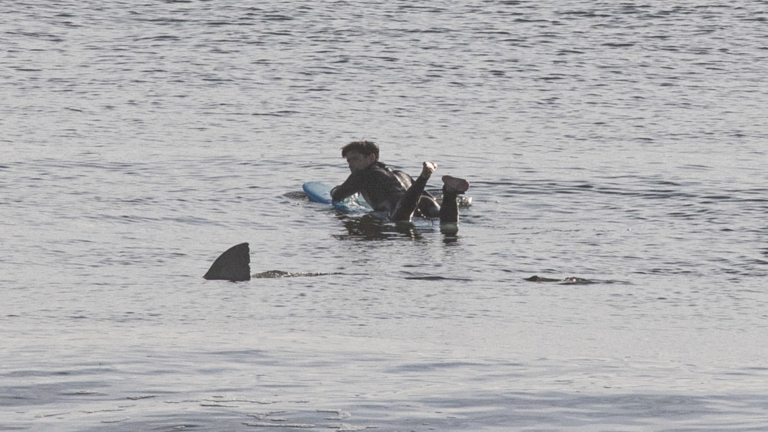
25. Cape Sharks Close to Shore: New Data Shows ‘High Potential for Overlap With Recreational Water Users’
Sharks that feast on seals along Cape Cod spend nearly half of their time at shallow depths, according to researchers who say the new data reveals a “high potential for overlap between white sharks and recreational water users” off the Cape. The researchers had tagged 14 sub-adult and adult white sharks off the Cape during the summer and fall of 2017. During the sharks’ resident periods along Cape Cod, the sharks spent 47% of their time at depths of less than 4.5 meters, or about 15 feet. The researchers classified depth records of 0 to 4.5 meters as “shallow” — where swimmers, surfers, boogie boarders, and paddleboarders spend their time. Although the overall risk posed to humans is low, recreational water users should assume white sharks are present along Cape Cod during the summer and fall, and proactively modify their behavior to reduce their encounter risk.
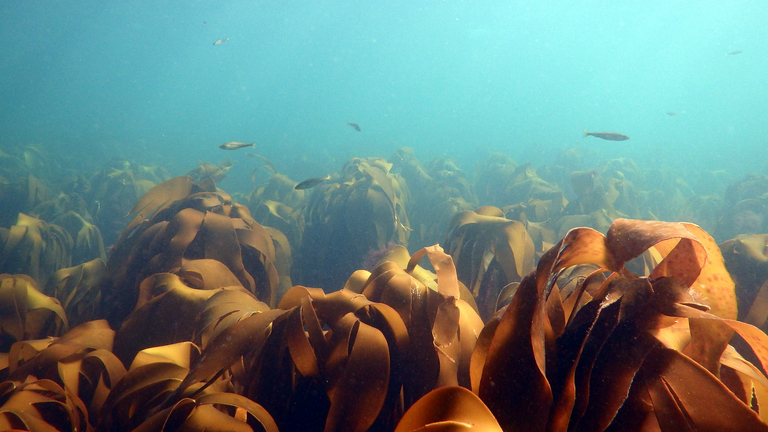
26. Trawl Fishing Banned off Sussex Coastline to Restore Kelp Forests
A new bylaw that prohibits damaging trawl fishing in 300 square kilometers of the seabed off Sussex in England has been approved, according to the Sussex Inshore Fisheries and Conservation Authority (IFCA). The hope is that this move will support the recovery of kelp forests. The marine plants that grow in forests in the coastal sea provide crucial habitat, feeding ground, and nursery for seahorses, cuttlefish, lobster, sea bream, and bass, increasing both wildlife and commercial stocks. While dense kelp forests thrived in Sussex’s waters up until the 1980s, they have dwindled in recent years due to storm damage and trawling activities. It has been reported that scientists and volunteer divers have been collecting baseline data on the remaining small pockets of Sussex kelp, to track the changes resulting from the bylaw.
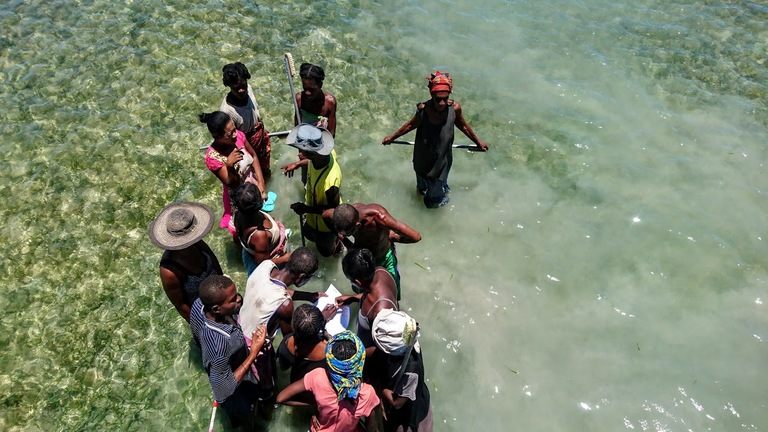
27. Blue Pioneers Accelerator Program Provides Funding for Marine Conservation Projects
The BPP Accelerator is an intensive leadership development program designed to expand emergent leaders’ capacity to solve complex ocean conservation problems. The program aims to equip the pioneers with skills in system and strategic thinking, collaborative problem solving, and rapid solution development. The winning projects were selected through a peer-review process. The other competing teams work on the Marine Turtle Responder Network and the Traditional Ecological Knowledge in Small Scale Fisheries. The Triple-Impact Sea Cucumber Aquaculture team won $37,000 to undertake a viability assessment of community-centric sea cucumber aquaculture farming in the Bahamas. The Ocean Changemaker Showcase team was awarded $13,000 to produce multimedia content featuring the Blue Pioneers and their projects for social media and for a dedicated exhibition at the Youth Panel of the United Nations Biodiversity Convention in Kunming, China, this fall.
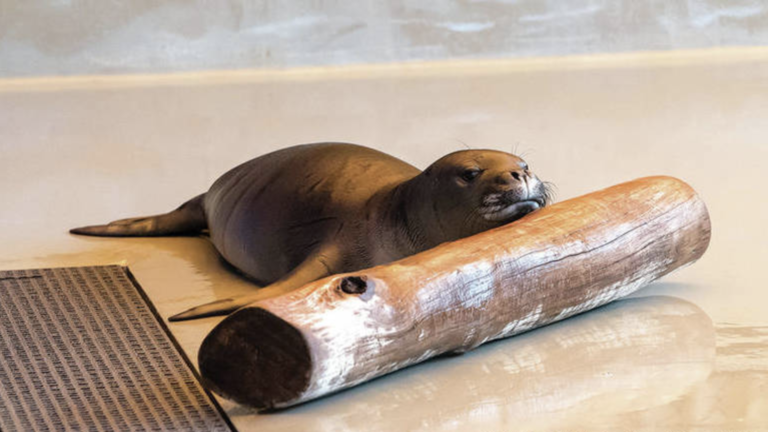
28. Hometown Heroes: Monk Seal Hospital Launches School Program
The Marine Mammal Center, is launching a new live, virtual program for upper elementary teachers and their students across Hawaii. The program, Seal Stories, encourages students to find solutions to the state’s most challenging conservation threats. The six-session program fills a critical void in conservation education in the state and allows teachers and students to connect with Center experts on a full set of environmental challenges. The center’s educators crafted Seal Stories to feature uplifting messages of hope and empowerment on current environmental issues. Sessions feature stories of individual Hawaiian monk sea patients, as well as offering solutions for the threats facing marine mammals and our ocean, such as climate change, ocean trash, diseases, and impacts of human interaction.
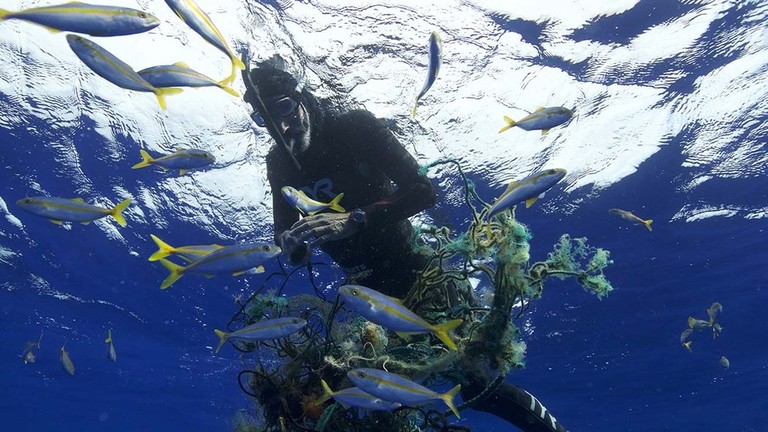
29. Ellen DeGeneres-Narrated ‘Endangered’ Among Month-Long Lineup of Earth Day Programming at Discovery
Discovery has scheduled a mont-long lineup of Earth Day programming as part of an effort to bring “attention to our beautiful world” and “all of the wildlife that calls it home.” The programming — will air across Discovery Channel, Animal Planet, and the subscription streaming service discovery+ — includes several new shows, including Endangered, a series executive produced and narrated by Ellen DeGeneres, and a marathon of the Emmy-nominated series Serengeti. Endangered, debuting April 22 on discovery+, follows the effort of dedicated wildlife conservationists across the globe as they work to compile the latest version of The Red List — the most comprehensive record of the state of the world’s wildlife that has ever been created. Discover is thrilled to invite viewers to join them all month long in celebration of our planet and the incredible slate of programming that highlights the beauty that surrounds us.
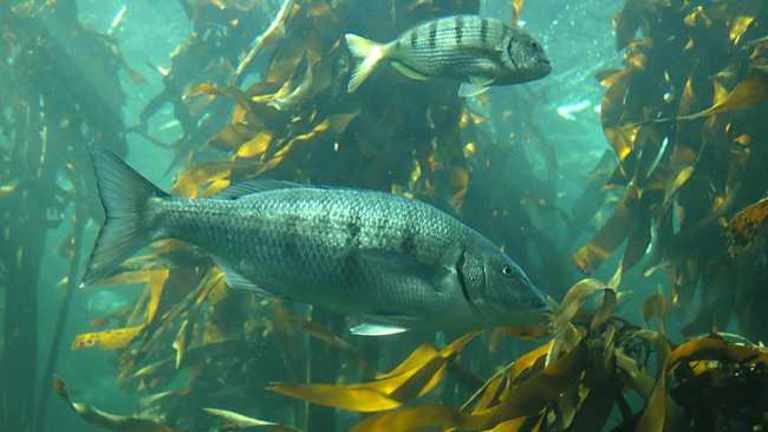
30. Sustainable Solutions Are Needed for Ocean Conservation
In the era of a global health pandemic that is exacerbating issues such as poverty, gender inequality, food insecurity and unemployment, ocean conservation and sustainability in South Africa and along the Atlantic Ocean coast of Africa, are a vital focus of research efforts by the Institute for Poverty, Land and Agrarian Studies.In South Africa we have shown excellence in marine and ocean sciences since 1896, but we have failed to raise social sciences in this sector to the same level of excellence. We need natural and social scientists to be part of research teams, and a good mix of emerging and young scholars involved in a transdisciplinary approach. We also must account for and protect the rights of the many small-scale fishers that produce 60% of Africa’s fish.




